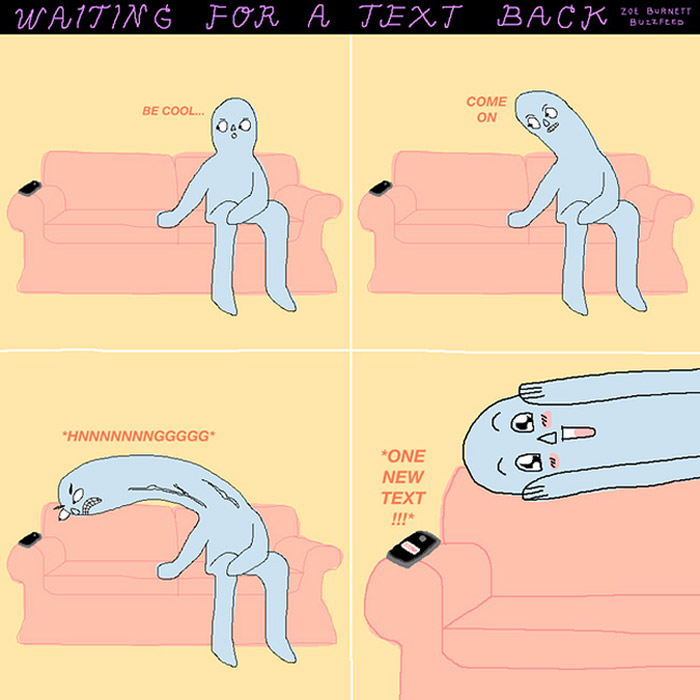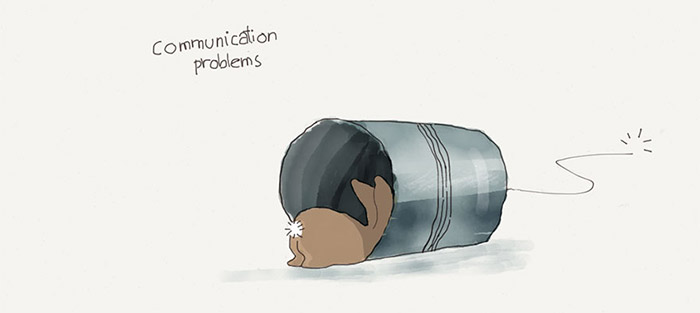Long Distance Relationships (LDR) are all about communication. Words are what we have.
What sets LDR apart from relationships we have with those in the same physical space as us is that LDR relationships are mediated. We’re not able to touch each other, see each other or physically do things together. Our interaction is mediated through media technology. We get to snap photos, write, voice call or video call each other. These are digitizing our everyday personal life into media and we use that media to create a shared space. I’ve talked about how this is, in many ways, an imagined space, in a previous article.
It might seem cynical, but you could equate it to watching a film and becoming absorbed in it, or listening to the radio and getting to know foreign issues. Except obviously LDR is based on honest and genuine interpersonal mediated interaction. But, from a media lens, both of the individuals are engaging in media production and consumption. And it’s here, really, that things can go sideways in LDR.
SYNCHRONICITY AND ASYNCHRONICITY
Mediated communication comes in two types:
Synchronous communication – where communication is in synch (a “live broadcast”, in TV terms).
Asynchronous communication – communication where a time lapse is inserted (a “pre-recorded broadcast”).
These two type of communication have implication when it comes to online interaction in LDR.
With synchronous interaction, you get to do things together with little or no delay. For example, you are asked to kneel, and you do it at the time you are ordered to, and that reflects back to the Dominant who feels good that His order is carried out. There is a control and power exchange happening in real time.
Asynchronous interaction is like writing an email. You spend time tuning out from the world, to focus on the white page screen, and you type a letter, encapsulating the moment in the text. You click the send button and the next day or next week it is opened and that capsulated moment is opened up and can be felt by the other party involved.
A good LDR can incorporate both types of interactions in different ways and feel the balance and stability of love and affection.
JUDGEMENT AND ASSUMPTIONS
Like any relationship, many LDR conflicts are caused by (and certainly produce) emotions. We feel frustrated, disrespected, neglected, or something else that sends us into a negative spiral. It’s always easiest to blame the ones closest to you, and so often we feel this is caused by our partner and internalise it as “you did this to me” and “this is your fault”.
The truth, however, is that often what we are experiencing are “communication glitches” or “communication fallout”.
When we expect things to be synchronous but they become asynchronous – or vice versa – that creates negative emotions. For instance, if you expect your long distance partner to reply because you are free and demand attention now, your expectation is synchronous interaction, but for some reason your partner isn’t free and doesn’t reply. His expectation is asynchronous interaction. That might make you feel “neglected” or “unloved” because you put in lots of love and encapsulated it in that one media text, but you didn’t get a ping back. Your emotion then translates into “i am not loved” and without physical interaction, you might bring this up to your partner verbally when you communicate. Your partner may become defensive and it down spirals into a dark hole of defensiveness on both ends. All triggered by mismatched expectations in communication.
Asynchronous interaction have its pros and cons. It is less time consuming, as you don’t need to stick to your phone all the time, and offers a chance to manage attention and focus to better manage your life. However, asynchronous interaction can give us “an illusion” of our partner.
i don’t mean “an illusion” in a negative way. For instance, you may watch a documentary about national independence, and you feel very patriotic, but that feeling is not related to your life in your country in 2016, it’s something else.
Asynchronous communication gives more room for misinterpretation and false judgement of real life situations. You may think your partner is happy, but he is actually going through some tough times, or you may think your partner has become highly affectionate for some reason that is inaccurate. If conflicts arise, you may evaluate and judge your partner inaccurately, and that can result in feelings like “you don’t understand me, not at all”. There’s some truth in that, but at the same time it is being caused by a LDR communication monster that has nothing to do with the core of the relationship.
ONLINE D/S DYNAMICS
Everything i’ve written so far could apply to any LDR, vanilla or D/s. i think with intense power exchange, mismatches in synchronicy have the potential to damage trust, and the foundation of D/s is trust.
Online D/s power exchange is like a Dom whipping with a blindfold on, and a sub kneeling with a blindfold on. What happens when there is a mismatch of expectations in communication and things go off-kilter? The Dom’s whip may hit the eyes or spine and He might not know. The sub’s lips may kiss a sharp knife or rock rather than His boots. The spaces that both parties are in has become largely different.
It’s important in this situation that we get our mindset in alignment. That means that both parties need to responsibility use words or any other form of communication to describe what space they are in. By space, i mean mental space and physical space, and how we see each other. If there is protocol in the relationship that mediates communication, then sometimes a tough decision has to made to temporarily suspend it so that both can be honest and open up to let the other explain. We need to evaluate whether the spaces we imagine our partner to be in at a distance is accurate or inaccurate.
That’s what removes the blindfold, so that we can see each other in the most naked way.
FURTHER READING
• Deviance & Desire – Online Relationships Need a Safety Net
• YouTube (Carl Keller) – Synchronous vs Asynchronous Communication


